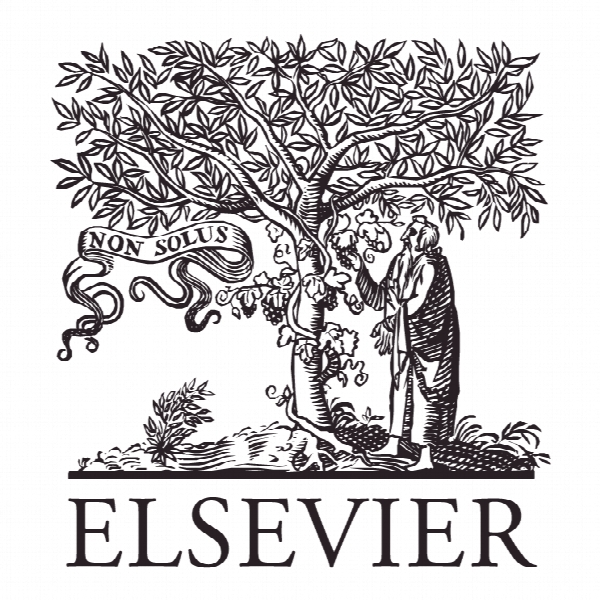پوشش سیگنال الکترونیکی الکترومیوگرافی مبتنی بر تقسیم بندی دوتایی Novel electromyography signal envelopes based on binary segmentation
- نوع فایل : کتاب
- زبان : انگلیسی
- ناشر : Elsevier
- چاپ و سال / کشور: 2018
توضیحات
رشته های مرتبط مهندسی پزشکی
گرایش های مرتبط بیوالکتریک
مجله پردازش و کنترل سیگنال های بیومدیکال – Biomedical Signal Processing and Control
دانشگاه Universidad Autónoma de Aguascalientes – Avenida Universidad – Mexico
شناسه دیجیتال – doi https://doi.org/10.1016/j.bspc.2018.05.026
منتشر شده در نشریه الزویر
کلمات کلیدی انگلیسی Electromyography signal, Envelope, Binary segmentation, Change-points
گرایش های مرتبط بیوالکتریک
مجله پردازش و کنترل سیگنال های بیومدیکال – Biomedical Signal Processing and Control
دانشگاه Universidad Autónoma de Aguascalientes – Avenida Universidad – Mexico
شناسه دیجیتال – doi https://doi.org/10.1016/j.bspc.2018.05.026
منتشر شده در نشریه الزویر
کلمات کلیدی انگلیسی Electromyography signal, Envelope, Binary segmentation, Change-points
Description
1. Introduction Electromyography (EMG) signals are an important topic of active research in view of their wide range of medical applications. For example, EMG signals have been classified using different criteria in order to diagnose neuromuscular disorders [1], they have been used as a tool in the evaluation of generalized tonic–clonic seizure semiology [2], in the recognition of emotions using facial recordings and statistical methods [3], in the automatic control of upper limbprosthesis [4], as a criterionto determine the differences in lower-extremity muscular activation walking between older and young adults [5], in the investigation of neck and shoulder muscle activity of orthodontists in natural environments [6] and as a mechanism to measure shoulder muscle fatigue during repetitive tasks [7] among other interesting biomedical applications. It is important to recall that EMG signals are measurements of the difference of electric potentials between two electrodes. In turn, these measurements are highly correlated to the intensity in muscular activity [8]. There are various well-established procedures to record EMG signals, one of them is called superficial electromyography (sEMG), which consists in placing the electrodes over the skin covering the muscle of interest using a conductive gel to get better data readings [9]. An sEMG signal is essentially a random stationary temporal series in which the activity of the measured muscle is reflected as an increase in the signal amplitude (also called a ‘burst’ in this work). Muscular activity may be identified by finding the localization, duration, shape and amplitude of those bursts in the electric signal. Beforehand we must recall that there are various approaches to investigate EMG signals from an automatic point of view. For instance,the recentliterature showsprogresses onde-noising techniques to remove electric interferences in EMG signals [10], on the efficient decision-tree algorithms for the classification of EMG signals using the discrete wavelettransform [11], on the use oftwodirectional two-dimensional principal component analysis based on stationary wavelets for EMG signals [12] and on the detection of activation/deactivation patterns in EMG signals with two [13] or more levels of electric activity [14]. However, the methods have sometimes limited applicability, and there are still many open problems in the development of robust methodologies for the investigation of EMG signals. As an example on the limitations of some of the methodologies available in the literature, recall that one way to recover the signal burst shape is by computing its envelope. The most common methods to compute envelopes are using moving averages [15,16], root-mean squares [17,18] and Butterworth low-pass filters [19,20]. However, it is important to point out that these methods lack effectiveness in detecting the beginning and the end of the bursts, and that this problem becomes more evident when one tries to obtain a smooth envelope. More concretely, this shortcoming appears when the window size is increased in the case of moving averages or root-meansquares, and whenthe cutfrequency is decreased in the case of Butterworth low-pass filters. For illustration purposes, Fig. 1 shows the limitations inherent to the calculation of envelopes using moving averages (top), root-mean squares (middle) and the Butterworth low-pass filter (bottom). In that figure, envelopes were calculated for the same EMG signal using the procedures described above. The signal is shown in gray while the envelope is depicted in dark blue. The black rectangles enhance the points of the temporal series where the methods fail to detect correctly the end of an activation period. Obviously, this is a strong limitation of these techniques which merits a closer attention.


